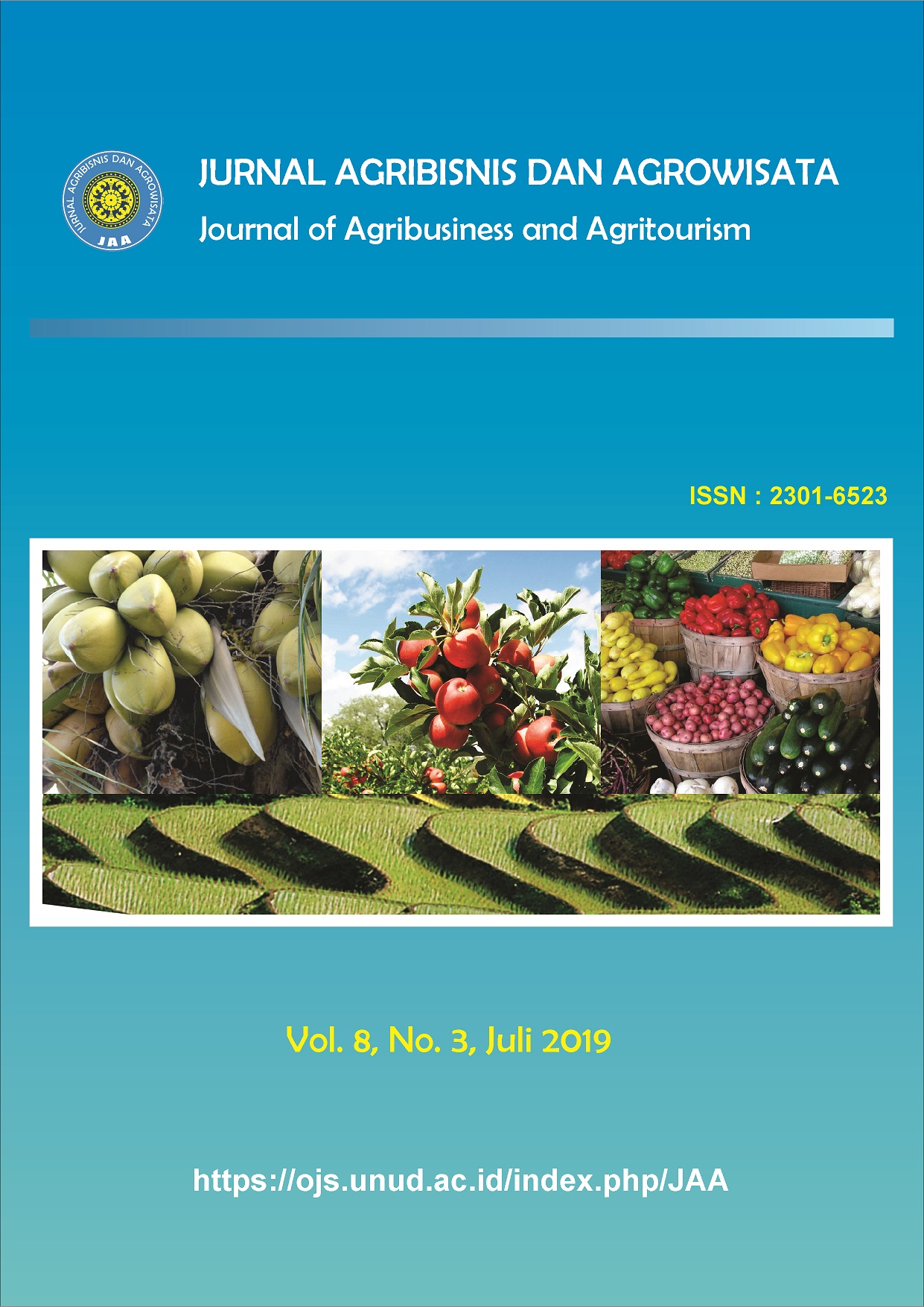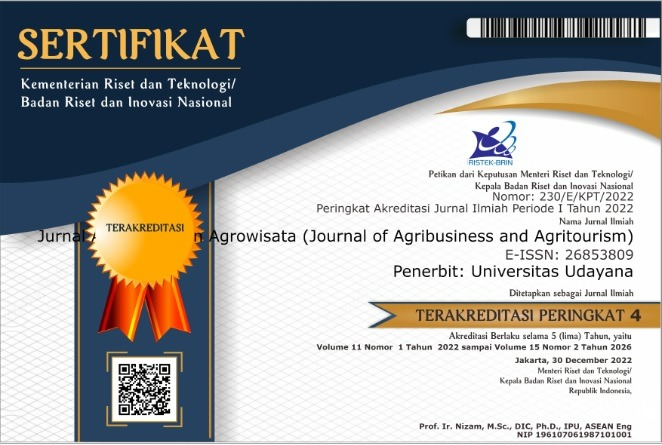Analisis Efisiensi Penggunaan Input Produksi pada Usahatani Bawang Merah di Desa Songan B, Kecamatan Kintamani,Kabupaten Bangli
Abstract
Efficiency Analysis of the Use of Production Input on Shallot Farming
in Songan B Village, Kintamani Sub-District, of Bangli Regency
Bali is a tourism area and a potential market for shallot business. One of the shallot
production centers in Bali is Songan B Village, Kintamani Sub-District, Bangli
Regency. Fluctuating shallot production is thought to be due to the inefficient use of
production inputs so that it is needed to analyze the efficiency of the use of production
inputs. This study aims to determine the effect and efficiency of the use of shallot
production inputs. The study was conducted in Songan B Village by analyzing
production inputs such as area of arable land, seeds, manure, NPK fertilizer, solid
pesticides, liquid pesticides and labor by using the Cobb-Douglas production
function.The data used were data in the March, April, and May planting season of 48
respondents determined by a simple random method. Efficiency can be seen from the
comparison of marginal production values and production input prices. The results
showed that the area of cultivated land, NPK fertilizer and labor had a positive effect on
the shallot production. Solid pesticides negatively affected the shallot production, while
the seeds, manure and liquid pesticides had no significant effect. The inefficient use of
production inputs is the area of cultivated land and NPK fertilizer, so that its use must
be increased, while other production inputs are inefficient that their uses must be
reduced.
Downloads
References
dan Pertanian Kementerian Perencanaan Pembangunan Nasional/Badan Perencanaan Pembangunan Nasional.
Badan Pusat Statistik dan Direktorat Jendral Hortikultura. 2016. Produksi Sayuran di Indonesia Tahun 2012-2016.
Badan Pusat Statistik Provinsi Bali. 2016. Bali dalam Angka 2016.
Gujarati D. 2006. Dasar-Dasar Ekonometrika Jilid 1 Edisi Ketiga. Erlangga. Jakarta.
Rahayu, Estu., dan Berlian VA, Nur. 2004. Bawang Merah. Penebar Swadaya. Jakarta.
Riduwan dan Akdon. 2009. Rumus dan Data dalam Analisis Statitiska. Alfabeta. Jakarta.
Soekartawi. 2002. Prinsip Dasar Ilmu Ekonomi Pertanian: Teori dan Aplikasi. Raja Grafindo Persada. Jakarta.
Soekartawi. 2010. Agribisnis: Teori dan Aplikasinya. Raja Grafindo Persada. Jakarta.
Sumiyati. 2006. Analisis Pendapatan dan Efisiensi Penggunaan Faktor-FaktorProduksi Usahatani Bawang Daun (Studi Kasus di Desa Sindangjaya,Kecamatan Pacet, Kabupaten Cianjur, Propinsi Jawa-Barat).Program Studi Manajemen Agribisnis Fakultas Pertanian Institut Pertanian Bogor. Internet. [Skripsi on-line]. http//repository.ipb.ac.id. Diakses tanggal 22 Februari 2018.
Suratiyah, Ken. 2015. Ilmu Usahatani Edisi Revisi. Penebar Swadaya. Jakarta.







